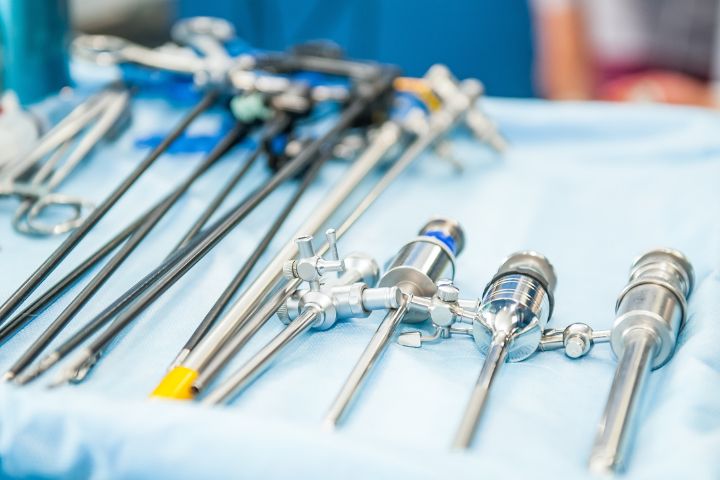It’s possible you already have some of the top sterile processing technician skills and qualities. Many skills in this career path are taught, but not all. This makes it a great career opportunity for a lot of people! A sterile processing technician is an important member of a pre-operative team. They are a team that works “behind the scenes.” Patients might not interact with them. But their work is vitally important to a patient having a successful surgery.
Before we get into the work they do, let’s start with some of the key skills of a sterile processing technician. People who might be good at this work are those with:
- A passion for organization: Do you enjoy a good spring cleaning? Do you have a system and everything in its place (for the most part)?
- Dexterity and physical stamina: Does working with your hands excite you? Do you prefer to be on your feet over in a desk job?
- Attention to detail: Do you like completing a checklist or step-by-step process? Do you like to be thorough? The work of a sterile processing technician is not one for cutting corners.
- Clean habits: Do you feel good after a cleaning routine? Do you enjoy cleaning (or at least some of the tasks required for cleaning)?
- Stress management: Even if you’re not perfect at this, if it is something you want to learn, you might make a good sterile processing technician.
There are other skills of a sterile processing technician that you will need to learn through formal training. Some employers hiring to fill sterile processing technician jobs want you to complete a certification or associate degree.
Get started with Dorsey College today!
Sterile processing skills you can learn in training
While the surgeons, surgical assistants, and registered nurses prepare a patient for surgery, a sterile processing technician prepares the tools and instruments that may be used in operating room. This includes sterilizing and disinfecting equipment as well as organizing instruments. No surgeon wants to get to the operating room to discover they do not have what they need! A sterile processing technician may also be in charge of organizing and preparing trays to make sure they are adequate for the procedure ahead.
As you can see, the work of a sterile processing technician can vary! Reading a job description closely is the best way to get an idea of the work involved in a position you might be interested in. No matter how you are involved in the process, a sterile processing technician’s skill must include attention to detail and cleanliness. You will need to be prepared to encounter and stick to strict protocols for processing equipment, sanitation procedures, to ensure patient care and safety.
Processing equipment
There are lots of important pieces of equipment at work before, during, and after surgery. A sterile processing technician’s role is key to success. Before a patient is wheeled into the operating room, a group of sterile processing technicians have already been working behind the scenes. They will make sure tools and instruments have been cleaned, and disinfected — which is quite important. This is a way to make sure strict infection control protocols are followed to ensure patient safety.
A good sterile processing technician program can teach you key techniques and strategies for processing tools, instruments, and perhaps even equipment in a timely but thorough manner. A sterile processing technician may also process equipment after the operation is finished. They will count tools and instruments a second time to make sure all are accounted for. They will also sanitize and clean any tools that were used during the procedure. If you’re not sure what these processes look like, that’s okay. A training program can teach you these skills and more.
Learning about sanitation procedures
Sanitizing is perhaps the most important task of a sterile processing technician. Keeping areas clean and sanitized is the key difference between a successful surgery and tragedy. To this end, the importance of the work of a sterile processing technician cannot be understated.
From temperature to method to process, there are some especially important pieces you will learn in training to become a sterile processing technician. If you do not disinfect something at the right temperature, you run the risk of bacteria and disease spreading. That is something you don’t want anywhere, but especially in a hospital! A good portion of your training to become a sterile processing technician will likely focus on concepts like this.
Patient care and safety
A sterile processing technician’s preparations are key to a patient’s safety. They work on a team of technicians to put the right tools in the right places. They make sure those tools are clean and sanitary.
The need for checklists and attention to detail is crucial. When a patient is wheeled into a room for a procedure, the room looks like it’s never been used. That’s due in part to the hard work of a team of sterile processing technicians who helped prepare the tools and instruments in advance!
How you can learn sterile processing technician skills!
A sterile processing technician program is meant to prepare you for the real-world work you may encounter in this career field. And in the real world, dedication to safety is important. That’s why most employers want technicians to complete specialized training before they will hire a candidate. Some employers also want you to pass a national certification.
Sterile processing technicians typically work in hospitals, dentists’ offices, doctors’ offices, or outpatient care centers. For most positions, it is a full-time job that requires a lot of standing on your feet.
No matter where you work, you will need to learn:
- Decontamination, cleaning, disinfection, and sterilization
- How to correctly assemble and package operative equipment
- Storage and distribution of medical and surgical supplies
- And more!
Get started with training at Dorsey College
Dorsey College offers a hybrid learning Sterile Processing Technician program! Hybrid learning programs are fantastic options for students with busy schedules who want a program where they can learn a portion of the curriculum online while also being able to come to campus to benefit from hands-on training.
In addition, students can take part in hands-on training through the program’s clinical training component. The program is an immersive and well-designed way to provide the best of both worlds when it comes to distance learning and hands-on instruction.

